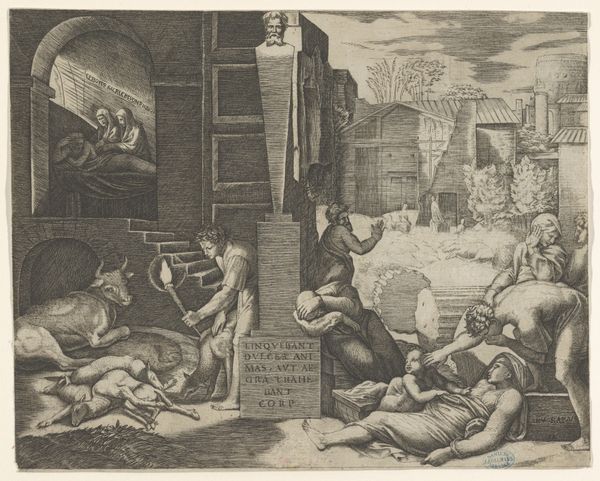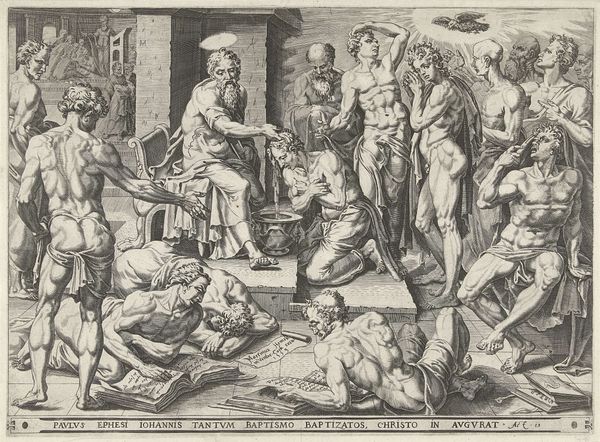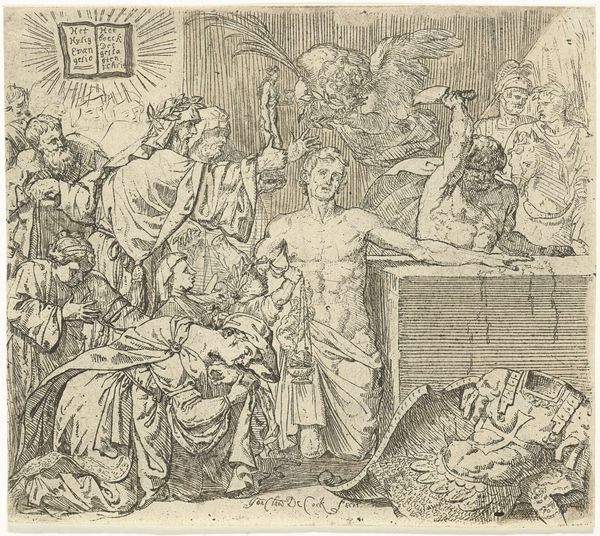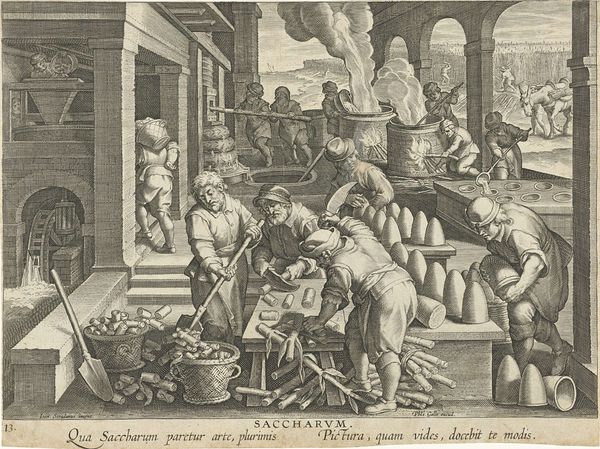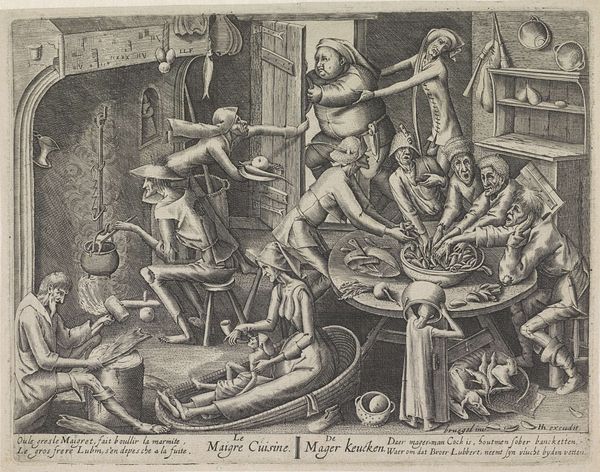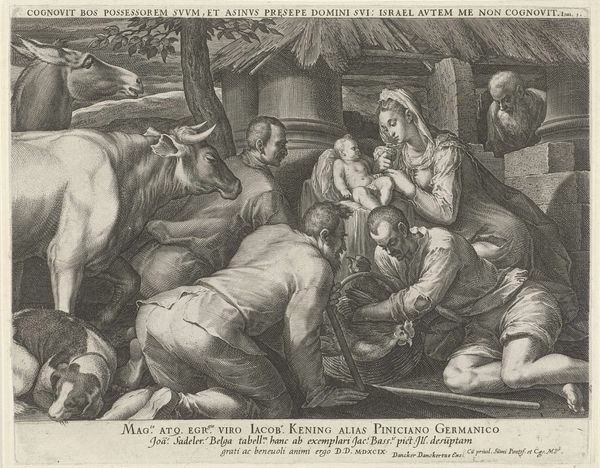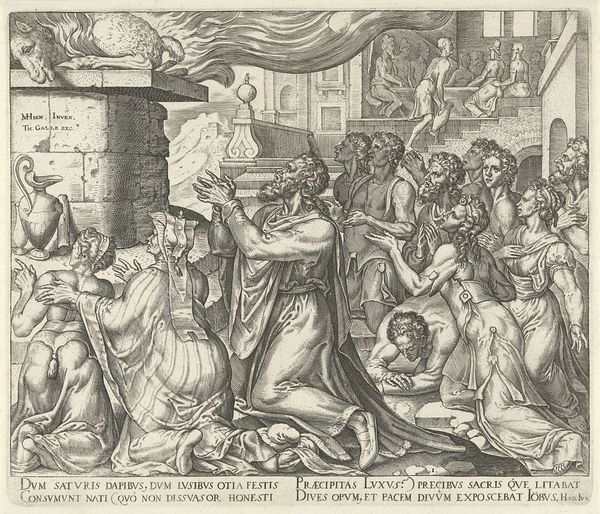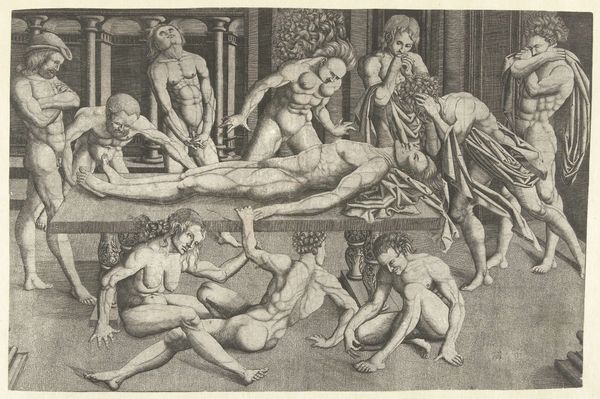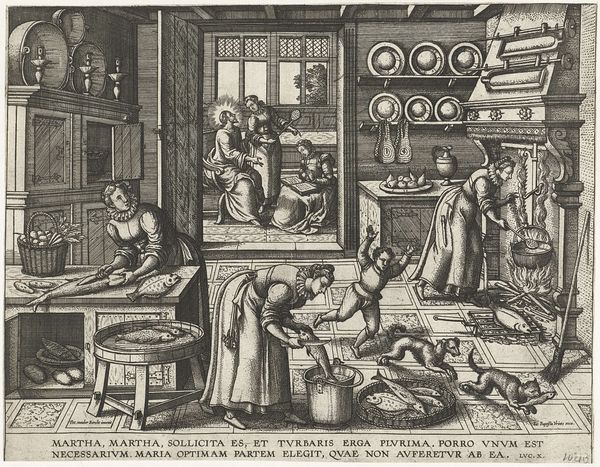
print, engraving
#
portrait
#
narrative-art
# print
#
charcoal drawing
#
portrait drawing
#
genre-painting
#
history-painting
#
northern-renaissance
#
engraving
Dimensions: height 325 mm, width 382 mm
Copyright: Rijks Museum: Open Domain
Curator: Let's turn our attention to "Een Huis Vol Rouw," or "A House Full of Mourning," an engraving attributed to Nicolaes de Bruyn. It dates sometime between 1581 and 1656 and is currently held in the Rijksmuseum. Editor: My initial reaction is one of stark grief and a pervasive sense of despair. The composition is quite powerful, throwing us right into the heart of bereavement with all its associated chaos and distress. Curator: It is an interesting amalgamation of genre and history painting. Notice how de Bruyn uses light, especially around the central figures. This radiance illuminates their faces, highlighting expressions of shock and sorrow. The figure peeking in from the door adds a very distinct symbolism. Do you agree? Editor: Absolutely, the single figure peering in represents exclusion, but also witnesses the raw and unfiltered impact of death on the household, mirroring societal expectations placed on grieving individuals. I'm struck by the details - the tools haphazardly hung on the wall suggesting daily life has stopped. What do they represent to you? Curator: Those commonplace items emphasize the finality of the event. They become symbols of an ordinary life disrupted, a life which these individuals must find a way to resume. This also contrasts starkly with the bed of the high-class women in the left area. It suggests an equality in times of grieve. Everyone grieves, whether one is rich or not. Editor: And the verses below really ground us in that concept: "En playntum traveyles resonant plubatilus ades, effringe autres trysa conta dolor." Those powerful inscriptions, so deeply tied to religious undertones, add to the idea of universal loss in our human journey. I'm struck, however, with what isn't visible: race, socio-economics, gender, as they pertain to social and institutional power. Curator: I see what you're suggesting about power and visual representation. The emotional impact, though, feels immediate and persistent, drawing upon archetypes of mourning that still resonate with audiences today, creating connections between the Renaissance and the modern experiences of grief. Editor: Yes, thinking about it now, even across cultural shifts and different historical contexts, the work encourages discussions about collective grief. Thanks for pointing those key connections in the use of the universal imagery. Curator: And thank you for the insights on modern experience. It gives me much to ponder.
Comments
No comments
Be the first to comment and join the conversation on the ultimate creative platform.

